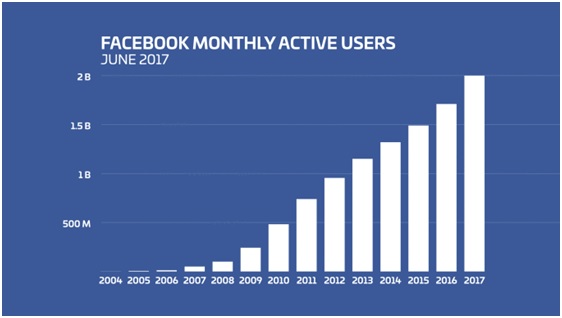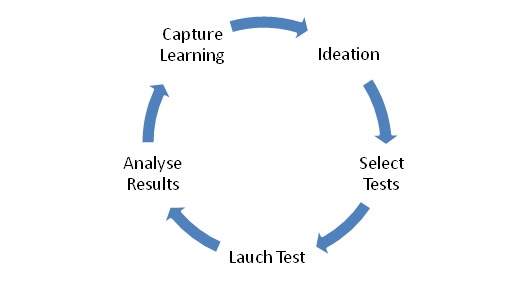Nobody wants to accept that their content is weak and not deserving to be read. After all, why would anyone write something that is utterly useless? However, there’s still a lot of content on the web that does not attract the target audience.
Read this article to know and understand why some of your website content is not being read and why is it that your audience is not being able to relate to you:
1. Repetition
A lot of websites just repeat the content that is already available in Google searches. If a consumer can find the same topic and the same angle on a blog post through Google search, why would the audience need to visit your website?
Most content on the web is just information that’s reformatted with keyword stuffing, unnecessary links, and ads and that’s where the interest is lost. We are not recommending you to invent something new but refrain from using the same top 10 tips that everyone has already been talking about.
2. Excessive Use of Product Name
Some website owners tend to write their product name over and over in an attempt to register it in the minds of the consumer. However, more mentions of the product in a small piece of content weaken the overall readability of the piece. Consumers tend to view it as forced promotion and you lose their interest.
3. More Focus on We
Content today is over-emphasizing on the brand and company itself. Statements that position the brand before the customer appears as excessive bragging leading to a frustrated reader. Try and eliminate the ‘I’ and ‘We’ from your marketing material.
4. Need to Upgrade
Website content may seem outstanding at the time of development. However, with changing market dynamics, innovations in technology, and new research, it is important that you update the obsolete information. Content must regularly be made fresh and relevant.
5. Eliminate the Obvious
Writing something that is obvious and the target audience is already aware of is an act that makes your content weak. Nobody will spend time reading your content if you say exercising regularly is important to lose weight or cutting down on your expenses can help to save money. Get rid of such obvious facts and bring in content that is advantageous for the readers.
6. Long Introductions
Some blogs start with an introduction to the topic that lasts around two paragraphs before the actual answer begins. This is more like the filler and can be avoided. If you skip these paragraphs and get to the most important information, it will help to keep the reader glued to your webpage.
7. Engage
Your topic may not be interesting but the way you write the content must be. It must have emotion, enthusiasm, a story, or a voice that adds a humanistic appeal to your content. Readers will only convert if they get excited after reading your content.
8. Monotonous
Long-form content is suitable for research papers and dissertations. Your website content must have a combination of video, text, images, music, and other elements that can break the monotony and keep the target audience interested.
9. Every Article is a Listicle
You must have come across articles like ’10 ways to lose weight’, ‘5 tips to grow your hair long’ etc. While these were a trend as finding information through a listicle was easier, avoid getting obsessed with it. Every article that you post must not be in the form of a listicle.
You need to provide the reader with a mix of educational, concise, precise, and appropriate information that helps them enhance their knowledge.
10. Misleading Content
Some webpages do not deliver the content that it promises in the title. If that is the case, your reader would just be deflected from your website and would not want to come back for any kind of further information.
11. False Information
There isn’t anything worse than providing wrong information. Google allows every reader to cross-check what has been mentioned by you and if you have written something incorrectly, it will completely kill your content and your website.
12. Lack of Appropriate Sources
An important aspect that most marketers ignore is to cite appropriate references and sources. Data used from trusted sources instead of editorializing helps to establish credibility. Credibility then leads to trust and it results in loyal customers.
13. Track the Length
Several discussions and forums have been created on the appropriate length of a webpage. There have been conclusions in favor of a 500-word post as well as a 1500-word post stating that they both can keep the reader interested as long as the content fulfills its purpose.
Content must value the time a reader is spending on the blog and therefore provide information that is worthwhile.
14. Relevancy
Every word on your website must be relevant to your brand, its products, and services. Bad content is irrelevant and customers are just not interested in reading it. If your content does not answer the real question and does not entertain, it will just fail.
15. Negativity
While stating the neutral facts related to your industry is good, putting your competitors in a negative light is not suggested. If you try to pull your competition down, they will try to do the same.
The outcome then would not be loyal customers but a battle between you and your competition resulting in continuous judgment by your target audience.
16. Fluff
Sometimes website owners add extra words to their content just to match with the design of the webpage and satisfy Google. However, these extra words can be noticed as fluff by the reader and tend to give a bad audience experience.
17. Selection of Words
Words used on the website must be compelling enough. Flowery words don’t always do the task and therefore, words selected must complement the goal of the content and must clearly convey the objective to the target audience.
18. Too Long, Too Boring
Most readers tend to exit the page if it has around 5000 words written on it. This is because they don’t have the time to read through the entire thing even if it provides the most factual, accurate, and relevant information.
It is therefore important to wisely break down the information into something that can be read easily and quickly. The same goes for large volumes of images and long videos.
19. Routine SEO
Sometimes content is just written to tick off the requirement in the SEO plan. Such a piece can easily be recognized and will fail at attracting organic traffic.
20. Not Mobile Friendly
The use of smartphones to access websites has increased tremendously. This means that your content must be mobile-friendly. The font and alignment must be such that readers can easily view it without having to zoom in or scroll left and right.
Takeaway
With the website content mistakes mentioned above, you may have realized what you need to fix. So, get going and make your content perfect so that viewers actually read what you want to say and then transform into customers.




















